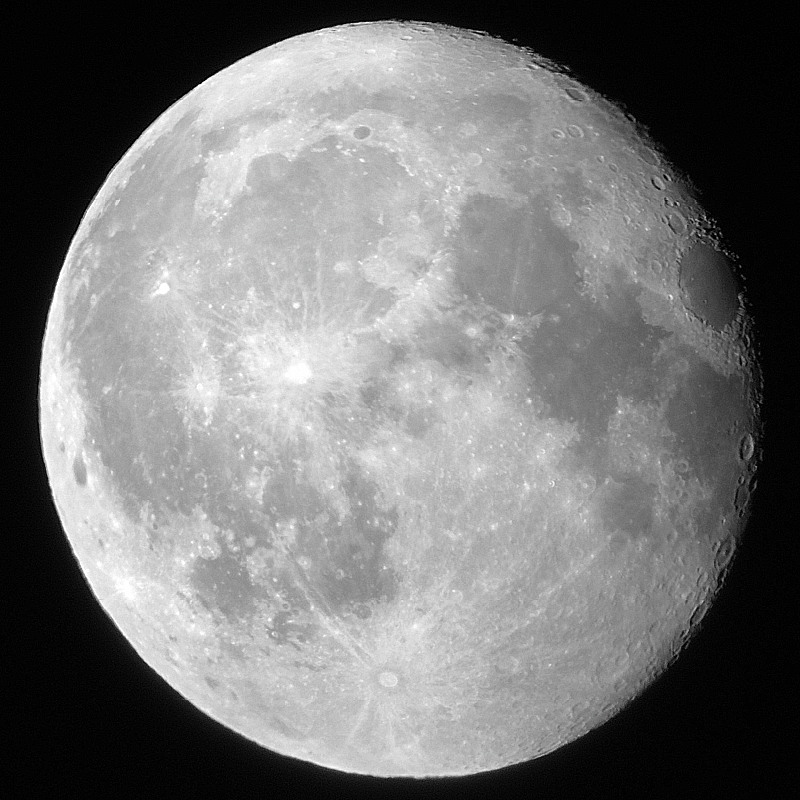
Jupiter Moons, Jupiter Video Tests, Waning Gibbous Moon
Posted: 18 January 2014
|
Opened: Friday, 17 January 2014, 1808 MST Temperature: 64°F |
Session: 648 Conditions: Clear, slight breeze |
At 1815 MST, viewed Jupiter, 83X and 222X. Even with Jupiter low in the sky, seeing was pretty good. The four Galilean Moons were visible and they all showed disks at 222X.
At 1830 MST, I decided to photograph the configuration of the moons. I did a series of photographs using the D7000 DSLR at the 8" prime focus + 2X PowerMate using various exposure settings. This combined image, taken at 1837 MST, 1/30sec, ISO 400 (Jupiter) and ISO 800 (moons), shows the four moons:

This screen capture from the iOS app "Pocket Universe" shows the names and positions of the moons:

At 1847 MST, the Winter Milky Way was easily seen, as the waning gibbous moon would not rise for another 35 minutes. At 1855 MST, the Zodiacal Light was visible. Astronomical Twilight would end at 1909 MST.
At 1910 MST, I did some test sky measurements using the iOS apps "Dark Sky Meter Lite" and "Dark Sky Meter". I sent the results to the developer.
At 1922 MST, the eastern sky was beginning to brighten due to the rising moon. I began preparing for HD video recording tests of Jupiter. Since the D7000 DSLR was still mounted on the telescope at prime focus + 2X PowerMate, I decided to do some tests in that configuration. I did a focus test image using the star Betelgeuse with the Bahtinov Mask. At 1929 MST, I began a series of 15 second HD video recordings using various exposure settings, ranging from 1/30sec to 1/200sec, ISO 1600 and ISO 3200. This is a stack of 149 frames at 1/200sec, ISO 3200, upscaled 200%:

At 1937 MST, I removed the camera from the telescope and viewed Jupiter at 222X to check on the seeing conditions, which was good. I then began setting up for eyepiece projection imaging at 222X. Did another focus test on Betelgeuse with the mask. Another series of 15 second HD video recordings were done at 1/30sec to 1/250sec, ISO 1600 to ISO 5000. This is a stack of 191 frames, 1/30sec, ISO 1600:

I think I will concentrate on doing eyepiece projection at 222X at 1/30sec, ISO 1600, for future tests.
I completed the video recording tests at 1957 MST and resumed Jupiter observing at 222X and 444X. The view was pretty good at 444X. The disks of all four moons were clearly visible. Also did some observing at 267X, which provided a great view. Several cloud bands were visible, especially in the northern hemisphere.
At 2007 MST, the waning gibbous moon began to rise over the hill to the east. At 2013 MST, viewed the moon, 267X and 83X. Took this handheld iPhone 5s photo of the moon, afocal 83X, at 2017 MST:

Did a final look at the moon, 83X, at 2026 MST.
|
Closed: Friday, 17 January 2014, 2034 MST Temperature: 55°F |
|
Comments are welcome using Email. Thanks.
Cassiopeia Observatory Home Page